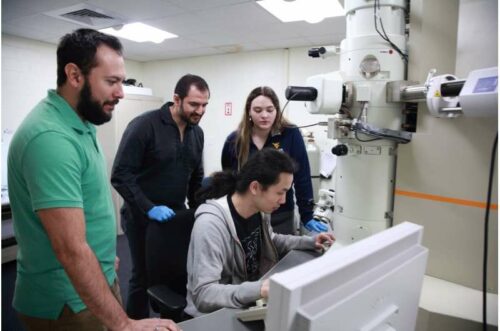Researchers have engineered a semiconductor material that can potentially decrease the amount of heat generated by power plants.

Efficiency is a measure of useful work performed by a machine with respect to the total energy expended on it. The total energy also includes energy that is not used in the process and is wasted. This waste of energy is not acceptable over time and is one the reasons for a machine to break down or be disposed of.
Researchers at West Virginia University have engineered a material with the potential to dramatically cut the amount of heat power plants release into the atmosphere. They have created an oxide ceramic material that solves a longstanding efficiency problem plaguing thermoelectric generators. Those devices can generate electricity from heat, including power plant heat emissions, which contribute to global warming. Researchers “achieved a record-high performance that had been deemed impossible,” said Professor Xueyan Song at the Benjamin M. Statler College of Engineering and Mineral Resources.
Oxide ceramics are from the same family as materials like pottery, porcelain, clay bricks, cement and silicon, but contain various metallic elements. They’re hard, resistant to heat and corrosion, and well-suited for high-temperature applications in air. They can serve as the material for thermoelectric generator components. However, oxide ceramics have “polycrystalline” structures composed of multiple connected crystals. Engineers run into trouble with large-scale thermoelectric applications for those materials since the “grain boundaries,” the places where those crystals meet, block the current and electron flow that powers thermoelectric generators.
Scientists added ‘dopants,’ or metal ions, into the polycrystalline ceramics to drive special kinds of dopants to segregate to the grain boundaries. This enabled them to turn the unavoidable and detrimental grain boundaries into electricity-conducting pathways, significantly improving thermoelectric performance.
However, thermoelectric generators lack effectiveness in converting energy, this problem was also solved by Song’s team. They manipulated the ceramic’s crystal structure on an atomic scale, using nanostructure engineering, to create a dense, textured polycrystalline material that outperformed the single-crystal materials that are currently standard.
Reference : Cesar Octavio Romo de la Cruz et al, Entering new era of thermoelectric oxide ceramics with high power factor through designing grain boundaries, Renewable and Sustainable Energy Reviews (2023). DOI: 10.1016/j.rser.2023.113186








